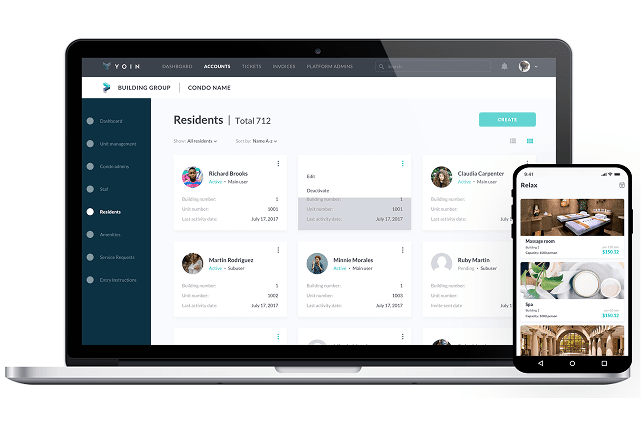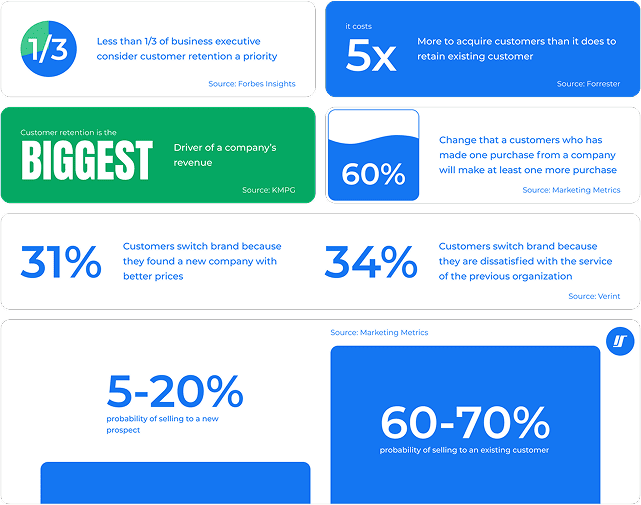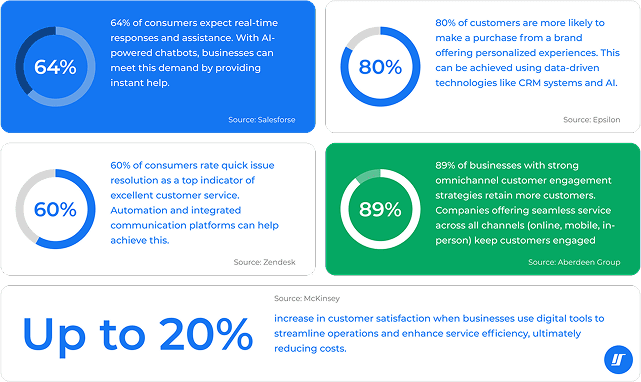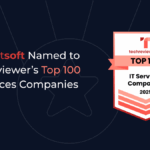At present the companies from different industries consider the most efficient methods of cutting the costs, making the entire workflow more productive and time-effective.
92% of G2000 companies rely on IT outsourcing, and modern workflow organization is increasingly centered around automation and upskilling to keep pace with technological advancements..
By outsourcing certain tasks, companies can focus on their core business functions, thereby improving efficiency and facilitating better resource allocation.
To achieve that, organizations usually consider various options of outsourcing engagement models, such as strategic sourcing, co-sourcing, staff augmentation, or even outsourcing. For IT outsourcing, the last two methods are considered to be the most popular methods, but which one is more efficient for the tech companies?

What is Staff Augmentation?
The global business process outsourcing market size is anticipated to reach USD 525.23 billion by 2030, growing at a CAGR of 9.6% from 2024 to 2030, according to a new study by Grand View Research Inc.
This factor, as well as the high demand for professional developers, makes IT outsourcing more and more attractive for global organizations to employ. One of these models is staff augmentation.
According to the PwC, staff augmentation is the temporary outsourcing engagement model that helps to depute internal audit staff during the temporary resource crunch. As a rule, companies involve the new employees for an estimated period of time without any long-term promises.
The main benefit of staff augmentation for the companies to get is winning some more time for picking a more experienced replacement by out-tasking the company’s projects to the temporary workers. Additionally, it allows companies to integrate external experts into their existing teams, enhancing operational efficiency while maintaining oversight and aligning with the company’s values.
What Is Outsourcing?
Unlike the previous type of outsourcing engagement, after involving the staff augmentation model, the company starts gradually transforming to the main outsourcing model.
In fact, that is the model based on the managed services and can manage an entire project from start to finish, providing more flexibility and skillful developers for the organizations than the IT staff augmentation.
Besides, this type can provide the companies with a more effective solution for reducing the expenses with getting the same performance quality and even more volume of the work done. Selecting a reliable outsourcing company is crucial to ensure the success of this model.
In this case, the service provider will offer the company a certain outcome for a defined price. Whereas the organization has to define the list of requirements on these services and performance criteria points. Project management plays a vital role in ensuring these outcomes are met successfully.
Staff Augmentation VS Project Outsourcing – the Main Difference
To see the actual strong and weak points of each option, let’s compare the pros and cons of outsourcing models. So, staff augmentation VS outsourcing — which one is best?

Control and Management
Outsourcing delegates control to an external team, which can lead to concerns about managing the quality and progress of the work. However, this external team often brings specialized knowledge and can enhance the security of intellectual property.
Cost Implications
The drawbacks of hiring full time employees include the associated overhead costs, such as salaries and benefits. In contrast, staff augmentation can be more cost-effective, allowing companies to scale their workforce based on project needs without long-term financial commitments.
Flexibility and Scalability
Outsourcing services provide access to diverse skills and resources, making it easier to scale operations up or down based on project requirements. This flexibility is particularly beneficial for companies facing fluctuating workloads or needing specialized expertise for specific tasks.
Expertise and Specialization
Staff augmentation grants access to specialized expertise, which can be crucial for complex projects where in-house capabilities may fall short. This approach not only fills skill gaps but also facilitates effective knowledge transfer, enhancing overall organizational capabilities.
Control and Management
Control and management are crucial aspects of any project, and both staff augmentation and outsourcing have different approaches to these aspects. With staff augmentation, businesses maintain direct control over the augmented staff, integrating them seamlessly into the existing team. This enables close collaboration and oversight by the company’s management, ensuring alignment with organizational goals. In contrast, outsourcing delegates control and management oversight to external entities, which may lead to a loss of control over project outcomes.
Flexibility and Scalability
Staff augmentation offers high flexibility, allowing businesses to adjust team size dynamically. This is advantageous for projects with variable workloads, enabling swift onboarding of skilled professionals without long-term commitments. Outsourcing’s flexibility depends on contract specifics, potentially limiting rapid adjustments. However, outsourcing provides access to diverse skills, and contractual terms may constrain scope changes without renegotiation.
Cost Implications
Staff augmentation typically involves a straightforward cost structure, where companies pay for the services of the augmented staff based on their hours worked or a fixed contract rate. Outsourcing often presents a more consolidated cost structure, where companies pay a predetermined fee for the completion of a project or a set of tasks. Outsourcing can lead to significant cost savings due to the outsourcing partner’s economies of scale, specialization, and the potential for lower labor costs in different geographical regions.
Integration with Company Culture
With staff augmentation, professionals are temporarily brought into the existing team, allowing for closer collaboration and direct interaction with the company’s core members. This proximity and day-to-day engagement facilitate a smoother assimilation of the company’s culture, ethos, and working methodologies. Augmented staff, working alongside permanent employees, are more likely to understand and adopt the company’s values and behavioral norms, fostering a cohesive and harmonious work environment.
Expertise and Specialization
Staff augmentation grants companies access to a broad pool of specialized talents on an as-needed basis. This model is particularly advantageous when a project requires specific skills that are not present within the current team. Through staff augmentation, companies can selectively integrate experts into their teams for the duration of a project or a particular phase, ensuring that specialized knowledge is directly applied where it’s most needed.
Time to Market
Staff augmentation typically offers faster project development and market entry due to the immediate availability of skilled professionals. Companies can swiftly onboard augmented staff to address skill gaps or meet project demands, minimizing recruitment delays and accelerating project timelines. Outsourcing may require more time upfront for vendor selection, contract negotiation, and onboarding processes. However, once initiated, outsourcing can lead to expedited project development and market entry by leveraging the expertise and resources of the outsourcing partner.
Benefits of IT Staff Augmentation with Specialized Expertise
Staff augmentation is the best option for your company if you want to:
- Put all the risks for the work done on your organization (the client);
- Vest all the knowledge and important information in the individual (without any documentation);
- Require limited out-tasking and work on the projects on a short-term basis;
- Pay for the hours worked and the project’s availability;
- Have to be responsible for the service delivery model, the process organization, and working tools;
- Need to quickly fill the in-house temporary resource crunch;
- Implement the supplemental staff to the direct interaction with your in-house team, with dividing all the tasks within one team.
As you can see, the staff augmentation model is supposed to be implemented directly to your company’s permanent workforce to provide them with additional assistance on the short-term projects when you have to quickly resolve the lack of labor or find a temporary solution until you find the right candidate for hire. This approach can significantly enhance your in-house teams by integrating specialized expertise, particularly in areas like data analytics, allowing for flexible responses to shifting project demands.
Benefits of Outsourcing Services
However, a great number of companies still prefer getting the permanent option for employee sourcing. That is why, we should also check the main benefits of another type — managed services model (or as it is also called — outsourcing).
Here are the main benefits of outsourcing:
- All the risks for the workflow performance and results transferring are put on the outsourced team;
- Different knowledge is documented and can be easily transferred by outsourcing partners;
- Provider is responsible for the service delivery, and some of the entire projects can be transmitted for completion;
- Work is paid according to the service type and volumes of the tasks;
- The provider gets control of all the processes of the execution component of IT, ensuring project success;
- The provider manages the service delivery model using specialized skills, internal processes, and tools.
In general, this model is more suitable for project outsourcing, when the company needs the work to be completed from scratch.
Furthermore, it is mostly employed by organizations that require constant task performance and don’t plan to find better candidates later.

How to Choose the Best Option?
Thus, after comparing staff augmentation vs outsourcing, it’s time to answer the question: which one is your choice?
In fact, both models can be utilized for getting the most of the employee outsourcing. The core factor is the basic needs and targets of the company: if you’re waiting for the outcome of your outsourcing process then the project outsourcing model, which involves delegating entire projects to external experts, will fit the bill.
However, if you’re looking for temporary additional input to your company’s existing team until you find the appropriate candidate for the permanent basis then it will be more rational to consider the staff augmentation.
Conclusion
To sum up, both staff augmentation and outsourcing can be the winning solution for IT outsourcing. Leveraging specialized skills can enhance project success by covering the resource crunch for different terms, which plays a critical role in the company’s final choice.
And, after the detailed comparison of the staff augmentation vs outsourcing, it becomes quite clear that the first one provides an input to the customer, while the second one delivers an outcome.
No matter which one you’ve decided to choose for your company, the key to success still implies getting a dedicated development team.
With this important factor employed, your company can get the most cost and time-effective solution that perfectly fits all its targets and needs.
At Intellectsoft, we provide various organizations and their workforces with innovative solutions and approaches for getting the most effective performance results.
Do you and your organization want to get a professional digital solution with additional engineering workforce?
Talk to our experts to discover more about the main engagement models, choose the one that fits your goals and learn how your company can start benefiting from it today!
Source link

















